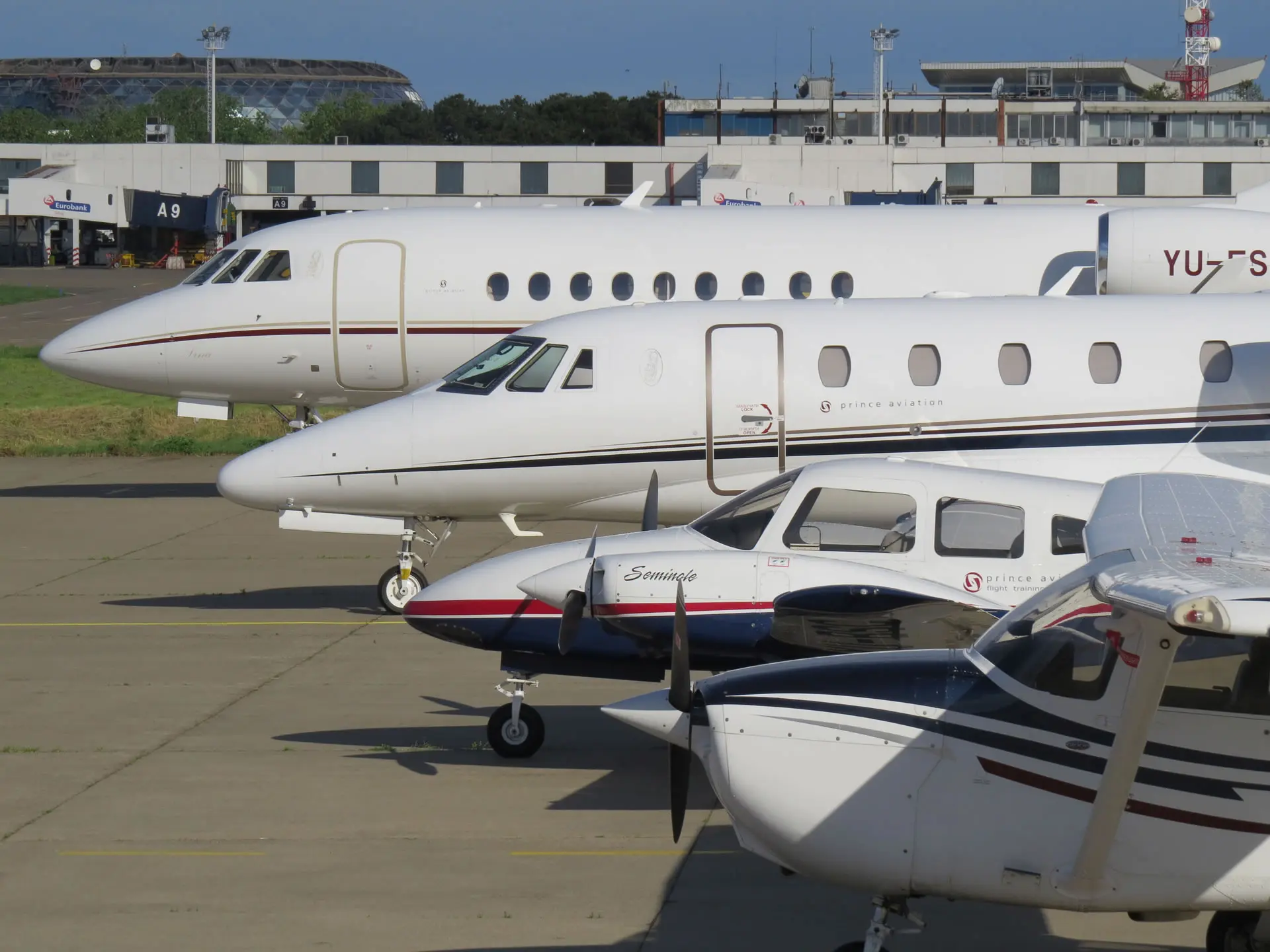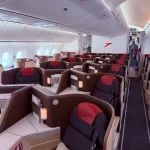After flying across more than 60 airlines globally, I’ve learned that not every carrier is trying to be the next Emirates or Singapore Airlines. Some focus on connecting underserved regions, offering affordable options in niche markets, or experimenting with flexible charter operations. Prince Airlines fits into that second category, a lesser-known name with strategic ambitions in Southeast Asia.
While it’s not (yet) a household name among global flyers, it’s important to look beyond the big players. In this article, I’ll explore what Prince Airlines is, how it operates, and what travelers can expect onboard. If you’re planning travel in or around Cambodia, or watching the Southeast Asian aviation market, this is a name you should at least be aware of.
What Is Prince Airlines?
Prince Airlines is a Cambodia-based airline headquartered in Phnom Penh. It was established under the umbrella of Prince International Airlines Co., Ltd., a subsidiary of Prince Group, a diversified Cambodian conglomerate involved in real estate, finance, and investment.
Though still in its early stages of development, the airline was designed to target both charter and scheduled flight markets with a focus on connecting Cambodia to broader Asia-Pacific markets, including China, Thailand, and Malaysia.
Key Attributes:
- ICAO Code: Not officially published (as of 2025)
- Founded: Incorporated in 2019, with operations planned from 2020 onward
- Headquarters: Phnom Penh, Cambodia
- Type: Hybrid model , scheduled + charter services
- Fleet Intentions: Initially planned narrow-body jets like Airbus A320 family
It’s important to note that Prince Airlines is not currently operating active commercial routes under global GDS platforms, as of mid-2025. This makes it a regional player with limited visibility outside of localized networks.
Where Does Prince Airlines Operate?
As of 2025, Prince Airlines operates limited scheduled services from Phnom Penh International Airport (PNH) to select cities in Asia. These include:
- Bangkok (BKK)
- Singapore (SIN)
- Guangzhou (CAN)
- Ho Chi Minh City (SGN)
- Seasonal routes to other Chinese and ASEAN cities
Their current fleet consists of narrow-body Airbus A320s, configured in a single-class or dual-class layout depending on the route.
Their route network is still growing, and flight frequency can be sparse, typically 3–4 times weekly per destination. Travelers should be aware that some listings may be charter flights operated under the Prince brand.
What Is the Onboard Experience Like?
I flew Prince Airlines on a short-haul flight from Phnom Penh to Bangkok to see what the service really offers. Here’s how it stacked up:
Cabin and Seating
The A320 cabin was clean and relatively new, with a standard 3-3 configuration in Economy. Seat pitch was about 29 inches, which is tight but expected for short-haul budget service. There was no in-flight entertainment system, and seats were non-reclining on my aircraft.
Service
Cabin crew were friendly, though their English was limited. Announcements were brief and mostly in Khmer and Chinese. Water was offered, but there was no complimentary meal or snack. A basic menu of paid drinks and snacks was available.
Punctuality
The flight boarded late but arrived on time. Ground handling in Phnom Penh was a bit chaotic with little signage, but manageable.
From a service standpoint, Prince Airlines reminded me of early-stage carriers still refining their processes, functional, no-frills, and focused on cost-saving.
Is Prince Airlines Safe?
Safety is always my first concern with lesser-known carriers. Prince Airlines, while relatively new, has not reported any major safety incidents since beginning operations. The airline operates under Cambodia’s civil aviation regulations, which align with ICAO standards.
Their fleet consists primarily of used Airbus A320s, previously operated by other Asian carriers. Maintenance appears to be outsourced to regional MRO providers, but official transparency on safety audits is limited.
If you’re concerned, I recommend checking:
- Their IATA code (if applicable)
- Flight history via Flightradar24
- Aircraft registration and maintenance records (where publicly available)
Until the airline builds a longer track record, it’s fair to say that Prince Airlines appears to be functionally safe, but lacks the independent safety data and third-party certifications found with major airlines.
Ticket Prices and Fare Structure
Prince Airlines positions itself as a low-cost regional carrier, and fares reflect that. I paid just under $85 USD one-way for my Phnom Penh–Bangkok flight, including taxes.
Here’s what to expect in pricing:
- Base fare often excludes baggage (carry-on only allowed)
- Checked baggage is an additional $20–$40 USD
- Seat selection ranges from $5–$15 depending on proximity to the front
- No loyalty program or alliance membership is currently available
It’s clearly a point-to-point budget model, designed for affordability, not flexibility.
What Are the Alternatives to Prince Airlines?
If you’re traveling within Cambodia or to nearby countries, the following airlines offer more established operations:
| Airline | Type | Fleet Size | Key Routes | GDS Available |
| Cambodia Angkor Air | Full-service | 10+ | PNH–REP, PNH–HCMC, PNH–BKK | Yes |
| Lanmei Airlines | Low-cost | 5+ | REP–CAN, KOS–BKK, PNH–SGN | Yes |
| Thai AirAsia | Ultra low-cost | 50+ | PNH–DMK, REP–KUL | Yes |
| AirAsia X | Budget long-haul | 20+ | KUL–PNH, KUL–HGH, KUL–SYD | Yes |
If you’re looking for reliability, stick to carriers with IATA codes and verified operating status in the GDS.
Customer Reviews and Reputation
Because the airline is still relatively small and young, online reviews are limited. On platforms like Skytrax, TripAdvisor, and local forums, the sentiment is generally neutral.
What passengers often note:
- Cheap fares on short routes
- No-frills service, no entertainment or food included
- Mixed ground support and customer communication
- Delays during peak travel seasons
Most complaints center around lack of information during disruptions, and limited contact options. Their website is functional but minimal, and customer service via phone or email can be inconsistent.
Who Should Consider Flying Prince Airlines?
From my experience, Prince Airlines is best suited for:
- Budget-conscious travelers flying within ASEAN
- Passengers comfortable with basic, short-haul flights
- Travelers who value price over perks and can tolerate limited service
If you’re carrying heavy luggage, need flexible change policies, or expect premium service, this isn’t the airline for you. But if you need a cheap, direct flight between regional hubs in Southeast Asia, it gets the job done.
Is Prince Airlines Worth Booking?
Prince Airlines is a relatively new, no-frills carrier based in Cambodia offering budget flights around Asia. It delivers affordable fares, standard short-haul service, and has no major red flags in terms of safety or aircraft quality. However, travelers should be aware of its limited route network, low support infrastructure, and strict fare rules.
If you go in with the right expectations, Prince Airlines can be a convenient and inexpensive way to hop between Southeast Asian cities, but it’s not a polished or premium experience by any measure.
FAQs About Prince Airlines
What is Prince Airlines?
Prince Airlines is a Cambodia-based low-cost carrier operating short-haul flights to regional destinations in Southeast Asia.
Is it possible to book a ticket on Prince Airlines?
Not through global booking platforms. The airline is not listed in major GDS systems and has no active online booking portal.
Where does Prince Airlines fly?
It offers flights from Phnom Penh to cities like Bangkok, Singapore, Ho Chi Minh City, and Guangzhou.
Is food or baggage included with a Prince Airlines ticket?
No. Tickets are low-cost and exclude checked bags or meals, which must be purchased separately.
Does Prince Airlines have a loyalty program?
As of 2025, Prince Airlines does not offer a loyalty or frequent flyer program.





